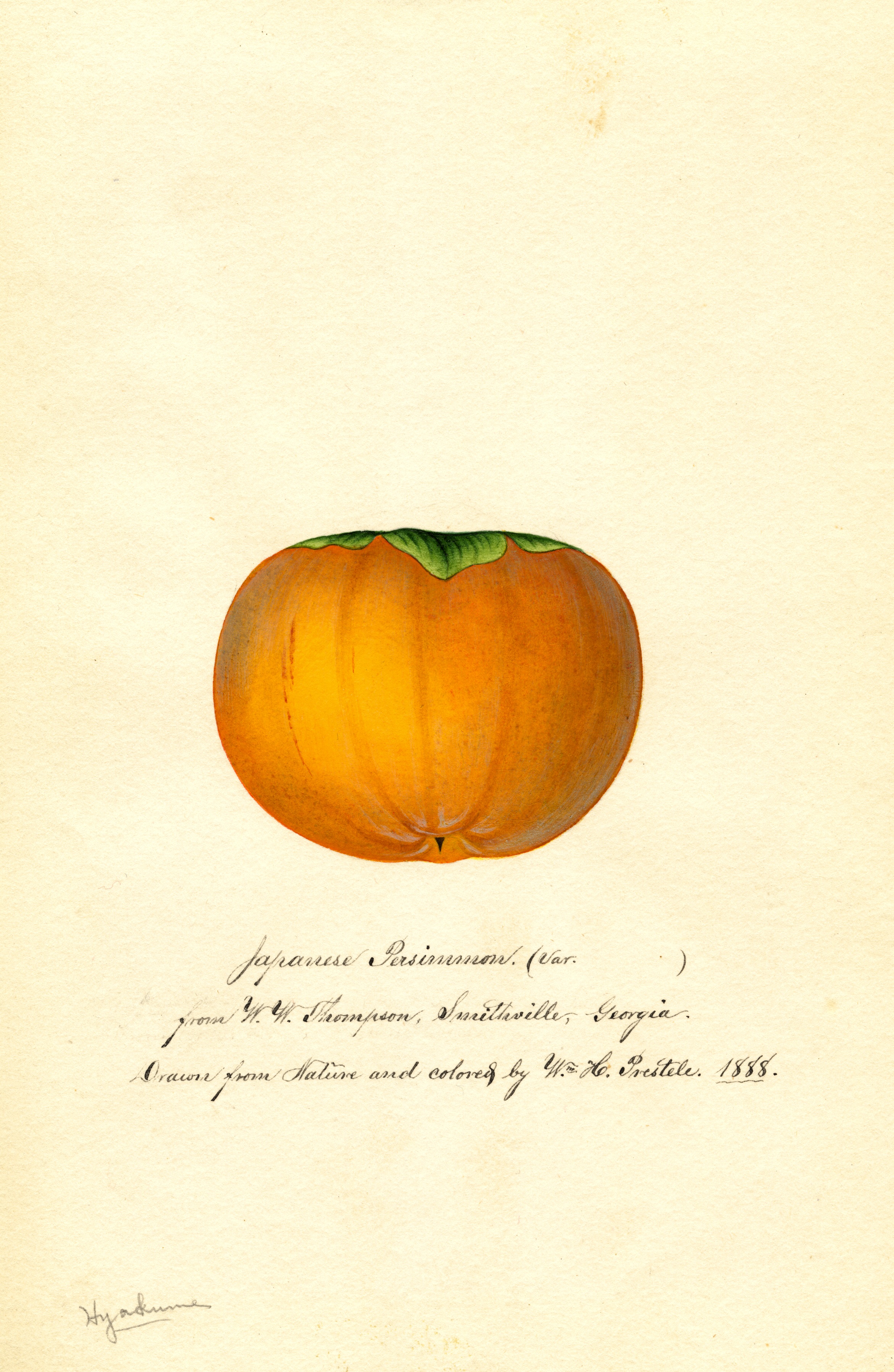 HYAKUME
HYAKUME
Sometimes marketed in the United States as the Brown Sugar Persimmon because of the brown color of its flesh and its intense sweetness, the Hyakume is a compact pumpkin colored fruit named after a Japanese weight measure of 5/6ths of a pound. Astringent, the unripe fruit was pickled in alcohol to mitigate the tannin, and ripe enjoyed eaten fresh. If pollinated, the flesh darkens in color and deepens in flavor. Besides the sugar, the dark flesh has a spice note that has led some to style the variety ‘the cinnamon persimmon.’ The ripe fruit is juicy. The one liability that early orchardists experienced with the Hyakume was the trees’ tendency to shed fruit before maturation if not pollinated. Sources, William Macklin, “The Kaki,” Transactions of the Florida State Horticultural Society (Jacksonville, 1904), 64.
“Form nearly spherical, apex end flattened; size medium 2 ¼ x 2 7/8 inches; color light red with many brownish cracks about the apex; cavity deep, grooved; apex a slender, sharp projection; stem medium stout, curved, 5-8 inch long; calyx large, rather thin; skin smooth, except a small area about the apex, very thick; flesh sweet, fibrous, solid, dark, filled with many brownish black specks; seeds six, elliptical, slightly kidney-shaped, large, 5/8 – ½ inch, brown; season October.” Hardrada Harold Hume, Japanese Persimmons (1904), 83.
In the early twentieth century the Hyakume was with the Hachiya and the Tanenashi, stood foremost in the favor of orchardists in southern California as a crop persimmon. The Hyakume earned respect because the fruit was "large, firm and of fine quality" (Robert R. McClean, "Farm and Garden Questions and Answers," San Diego Union, August 21, 1921, p21). In the South, it enjoyed particular favor in Louisiana and got a reputation for producing bumper harvests of fruit, and newspapers periodically published reports of trees so heavily laden the limbs had to be propped to keep from breaking. Hyakume began being grown throughout the South in the 1890s.
Nursuries that offered Kyakume Kaki prior to 1920:
Alabama Nursery, Huntsville, AL 1900. Atlanta Nursry, Atlanta, GA 1891. Cherokee Nursery, Waycross, GA 1893. Clingman Nurseries, Keithville, LA 1908. Glen St. May Nursery, Glen St. Mary, FL 1894. Orlando Nursery, Orlando, FL 1894. Pomona Nursery, McClenny, FL 1906. Royal Palm Nursery, Oneco, FL 1898. Summit Nursery, Monticello, FL 1902. Turkey Creek Nursery, McClenny, FL 1906. Van Lindley Nurseries, Pomona, NC 1909.
Image: U.S. Department of Agriculture Pomological Watercolor Collection. Rare and Special Collections, National Agricultural Library, Beltsville, MD 20705, [William Prestele], undated [ca. 1888].
David S Shields